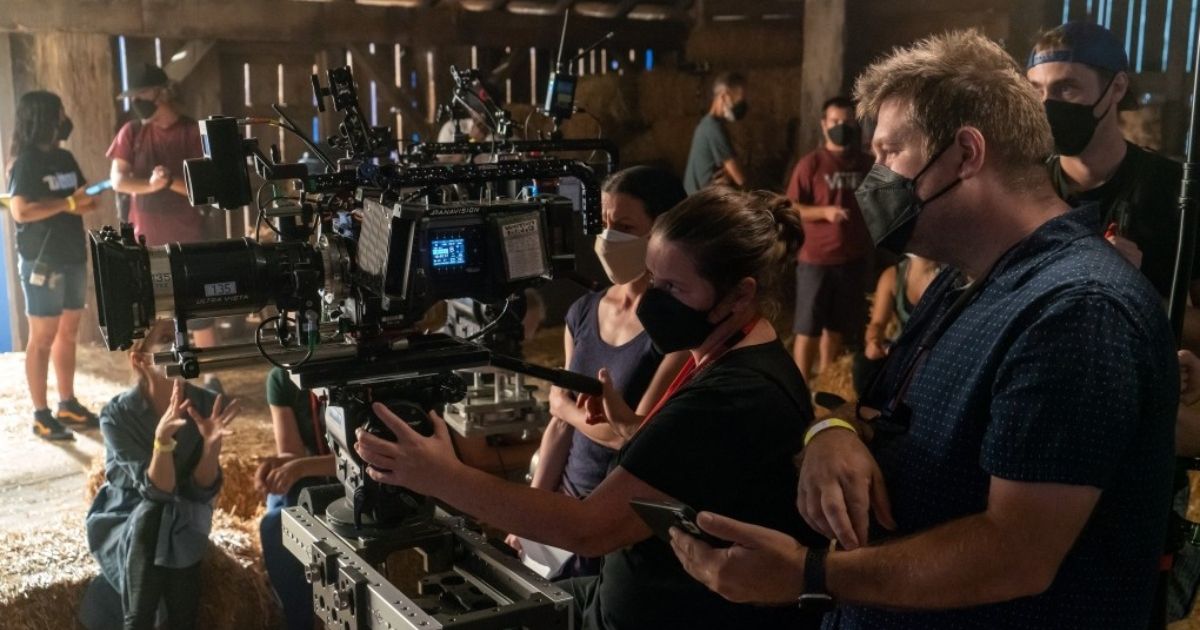It’s the morning after Women Talking had its premiere screening at Toronto International Film Festival 2022 when cinematographer Luc Montpellier and I meet for our Zoom interview. To say the film, from writer and director Sarah Polley, resonated with the audience would be an understatement. Indeed, after screening for the first time ever at Telluride, shortly before TIFF, Women Talking received rave reviews, with The Hollywood Reporter calling it a “finely crafted vision of rage and hope” and Variety already touting Polley as a possible Best Director Oscar-winner in the upcoming awards season. If this were to happen, it would make her the third consecutive woman Best Director, following Jane Campion’s win last year and Chloé Zhao’s in 2021.
Starring some of the best actresses in Hollywood today, like Rooney Mara, Claire Foy, and Frances McDormand, Women Talking effectively marks Polley’s return to the director’s chair after a decade away from the industry. To shoot her film, which she adapted from Miriam Toews’ novel of the same name, Polley brought on long-time collaborator Montpellier, who, in fact, served as DP for her other feature films (Away From Her and Take This Waltz). “We have this great process where I get a script fairly early in her process, which is kind of unprecedented,” he says in our interview, “and whenever she does that, she always says a few keywords to set me in the tone of what she’s thinking.”
For Women Talking, which tells the story of a group of Mennonite women dealing with continued sexual and physical abuse from the men in their colony as they gather to discuss whether they should leave or stay and fight, Montpellier says that Polley wanted “the visuals to mirror the epic nature of this decision.” To do this, the cinematographer leaned into the subtext of the dialogue-heavy scenes, and utilized camera movements and angles, framing, and the overall texture and color palette of the film to accentuate it. “We didn’t want to shy away from the gravity of the situation,” Montpellier says. “I wanted the audience to be immersed in [the women’s decision-making] at a very subconscious level.”
On Shooting Women Talking with Intent
“We really dug deep into trying to bring the subtext beyond words,” Montpellier says when asked how he and Polley worked to elevate the dialogue in Women Talking. Indeed, the majority of the film takes place in a single location — a hayloft — and mostly consists of the group of women discussing possible solutions to the epidemic of rape in their colony. “You can easily just set cameras up in a room full of people and cover everyone in a close-up, but we wanted to have a little more intent than that.”
Montpellier’s work in Women Talking, in addition to its cast (particularly Foy’s show-stopping performance), is one of its crowning achievements. From the desaturated color palette to the dynamic way in which the camera moves through the space and frames the women, the film’s visuals masterfully emphasize the sometimes opposing viewpoints brought up during the meeting, thereby highlighting each of their characters and perspectives. “One of the things at the beginning of conceiving this was that Sarah wanted frames to constantly be filled with women’s faces or [have] women group shots as they were deciding what to do. We very sparsely went to a single close-up. We were very conscious of when we isolated a character.”
Showing violence in Women Talking, of course, became a key conversation between Polley and Montpellier, specifically with regard to what was shown and how much. “I think as human beings, we tend to complete the picture in our heads. That’s what I really appreciate about how Sarah chose to present those moments, even in the quick flashbacks to those events,” says Montpellier of their less-is-more approach. “It wasn’t about shocking the audience. Everyone understands, in those early scenes, what has happened. I think that’s probably more horrific: when you’re sitting there and left to fill in the blanks and fill in the images.”
Considering Women Talking was a women-focused story, led by an ensemble cast of women characters, and written, directed, and produced by women, there was a moment, early on in development, when Montpellier questioned whether he, as a man, was right for the job. “When I read Sarah’s script, I called her up and said, ‘I need to find an entry point to the story,’ because I am a man, it’s a female-driven story, and I was struggling with that at the beginning.” Montpellier even so far as to suggest to Polley, despite their established working relationship, that she hire a woman cinematographer instead. “I was willing to step back, but Sarah told me one simple thing that really changed everything for me, and it’s in the film, too. She said, ‘This film is not just about women. It’s about everyone. It’s about the conversation that men and women should be having about our roles in the world.'”


